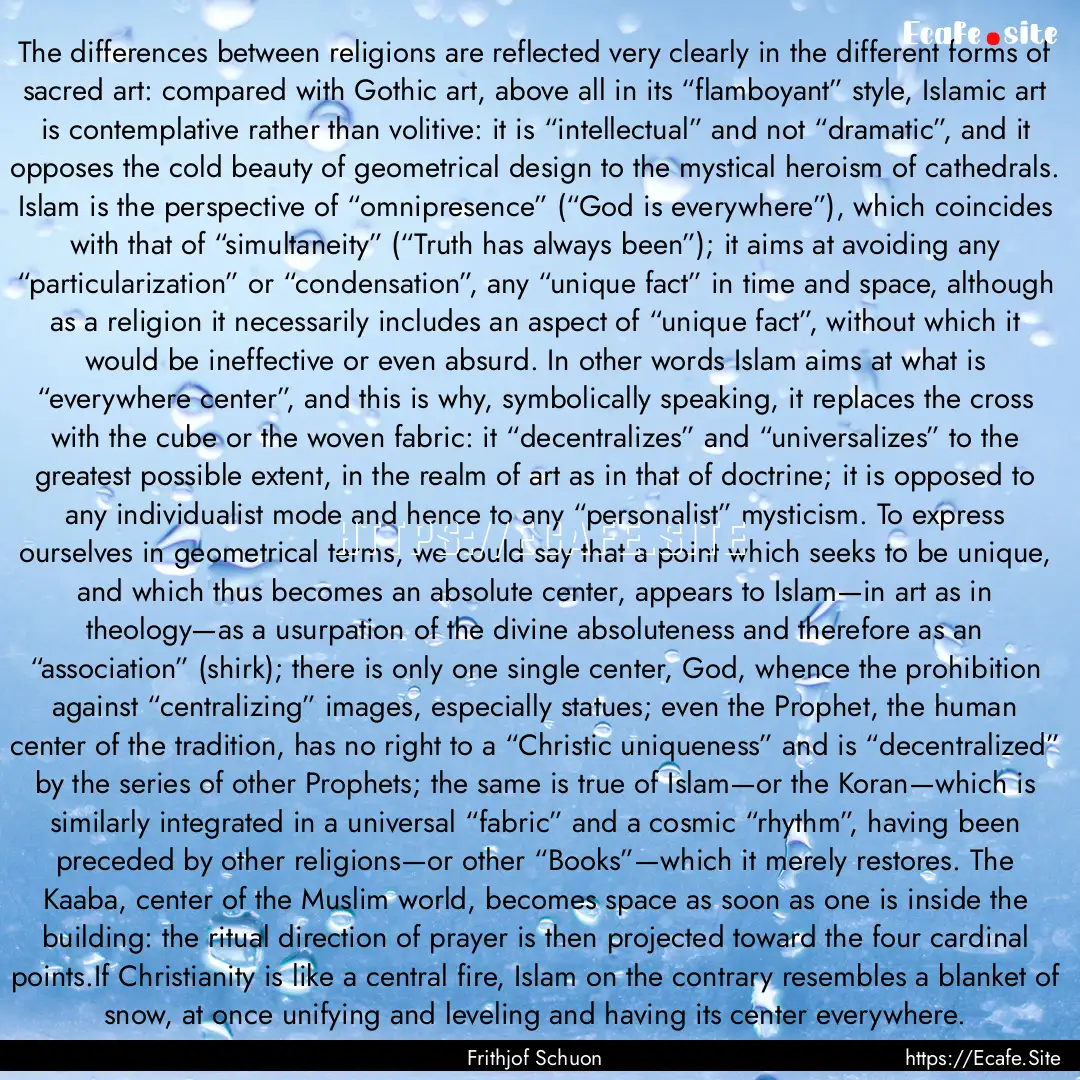
Report, if you have a problem with this page“ The differences between religions are reflected very clearly in the different forms of sacred art: compared with Gothic art, above all in its “flamboyant” style, Islamic art is contemplative rather than volitive: it is “intellectual” and not “dramatic”, and it opposes the cold beauty of geometrical design to the mystical heroism of cathedrals. Islam is the perspective of “omnipresence” (“God is everywhere”), which coincides with that of “simultaneity” (“Truth has always been”); it aims at avoiding any “particularization” or “condensation”, any “unique fact” in time and space, although as a religion it necessarily includes an aspect of “unique fact”, without which it would be ineffective or even absurd. In other words Islam aims at what is “everywhere center”, and this is why, symbolically speaking, it replaces the cross with the cube or the woven fabric: it “decentralizes” and “universalizes” to the greatest possible extent, in the realm of art as in that of doctrine; it is opposed to any individualist mode and hence to any “personalist” mysticism. To express ourselves in geometrical terms, we could say that a point which seeks to be unique, and which thus becomes an absolute center, appears to Islam—in art as in theology—as a usurpation of the divine absoluteness and therefore as an “association” (shirk); there is only one single center, God, whence the prohibition against “centralizing” images, especially statues; even the Prophet, the human center of the tradition, has no right to a “Christic uniqueness” and is “decentralized” by the series of other Prophets; the same is true of Islam—or the Koran—which is similarly integrated in a universal “fabric” and a cosmic “rhythm”, having been preceded by other religions—or other “Books”—which it merely restores. The Kaaba, center of the Muslim world, becomes space as soon as one is inside the building: the ritual direction of prayer is then projected toward the four cardinal points.If Christianity is like a central fire, Islam on the contrary resembles a blanket of snow, at once unifying and leveling and having its center everywhere. ”

Frithjof Schuon
From : Gnosis: Divine Wisdom: A New Translation with Selected Letters



